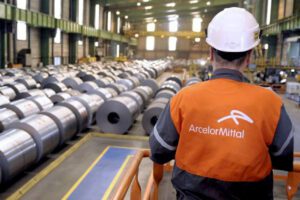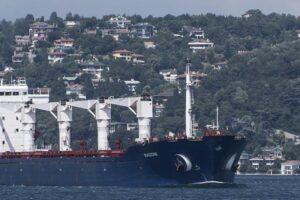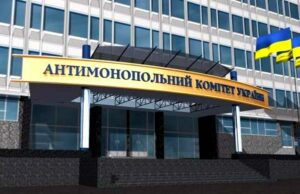
PJSC ArcelorMittal Kryvyi Rih (Dnipropetrovsk region) at its coke chemical division in January-July this year reduced production of metallurgical coke by 59.4% compared to the same period last year, to 696,700 tonnes.
A representative of the company told Interfax-Ukraine that in July the company produced 43,500 tonnes of metallurgical coke.
At the same time, in January-July 2022, production of 6% moisture gross coke at the plant amounted to 800,000 tonnes, including 51,000 tonnes in July.
Coke production at ArcelorMittal Kryvyi Rih over seven months of 2021 increased by 11.9%, to 1.716 million tonnes, including 257,000 tonnes in July last year.
In January-July 2022, the company received 216,000 tonnes of domestic coal, 390,000 tonnes from Russia (before the war), 65,000 tonnes from Kazakhstan, 27,000 tonnes from Poland, 15,000 tonnes from the Czech Republic, 190,000 tonnes from the USA and 126,000 tonnes from Australia. In July, the plant delivered 68,000 tonnes of domestic coal, 32,000 tonnes from the United States, and 4,300 tonnes from Australia.
ArcelorMittal Kryvyi Rih is the largest producer of rolled steel in Ukraine. It specializes in production of long products, in particular rebar and wire rod.
Foreign trade turnover by the most important positions in Jan-May 2022 (export)

SSC of Ukraine

The Joint Coordination Centre (JCC) authorized five outbound vessels loaded with food on Thursday within the framework of the Black Sea Grain Initiative, the UN has reported.
“JCC authorized the movement of five ships carrying a total of 83,241 tonnes of grain and other foodstuffs as part of the Black Sea Grain Initiative,” the UN said.
The UN reported that vessels Jasmin Queen (9,531 tonnes of corn), Captain Adam 1 (9,300 tonnes of wheat) and Filyoz (4,410 tonnes of sunflower oil) will go to Turkey. The Kiran America ship will head to China with 50,000 tonnes of barley and corn, while the Santana ship will deliver 10,000 tonnes of wheat to Italy.
In addition, vessel Dignity (8,200 tonnes of sunflower seeds) previously postponed the departure from the port of Chornomorsk to Thursday, September 8. It is planned that it will go to Turkey.
“As of September 7, the total tonnage of grain and foodstuffs exported from the three Ukrainian ports is 2.335 million tonnes. In total, the movement of 211 ships has been authorized at the moment – 111 inbound and 100 outbound,” the UN said.
In Istanbul on July 22, with the participation of the UN, Ukraine, Turkey and Russia, two documents were signed on the creation of a corridor for the export of grain from three Ukrainian ports – Chornomorsk, Odesa and Pivdenny.
Black Sea Grain Initiative, CHINA, ITALY, SHIPS, TURKEY, Ukrainian food

The Antimonopoly Committee of Ukraine has opened a case on the fact that ProZorro.Sale state enterprise had established additional terms of the contract and payment for access by operators of authorized electronic platforms to the electronic trading system ProZorro.Sale.
“The case was initiated on the statements of one of the operators, who complained about the unreasonable increase in fees for the development of the electronic trading system and the provision of access to ProZorro.Sale only after additional conditions are met,” the statement on the official website of the Antimonopoly Committee of Ukraine reads.
It is indicated that the state-owned enterprise requires a certain fee for the development of the electronic trading system, however, the AMCU has reason to believe that its size is not economically justified.
The committee also found out that ProZorro.Sale state enterprise provides operators with access to the ProZorro.Sale trading system only if they fulfill additional marketing obligations that do not directly relate to the subject of the access agreement and aim to promote the trading system.
The AMCU noted that back in 2021, the committee began to study the situation on the market for providing services for access of operators of authorized electronic platforms to the electronic trading system, which is used to conduct auctions in normatively defined areas.
As a result of the adoption of control measures, recommendations were provided to ProZorro.Sale aimed at eliminating the above problems. However, the state-owned enterprise has not taken comprehensive steps to prevent possible negative consequences for the competitive environment.
Now, in case of evidence of the negative impact of the actions of ProZorro.Sale on competition in the market, the company may face a fine of up to 10% of income per year preceding the decision on the violation.
The net income of the state enterprise in 2021 increased by 2.7 times, to UAH 141.81 million, and its net profit increased to UAH 42.43 million from UAH 950,000 in 2020.
In the first half of 2022, the revenue of ProZorro.Sale decreased by 36.3%, to UAH 25.14 million, and its net loss amounted to UAH 6.92 million against UAH 550,000 of net profit for the first half of 2021.

The number of active construction sites in Kyiv increased by 17 in August to 173, M4U founder Volodymyr Danilenko told Interfax-Ukraine.
“The number of active construction sites in Kyiv continues to grow. In August, another 17 construction sites resumed work, the total number of active sites reached 173. However, this is still 22% less than before the war,” he said.
According to M4U, most of the new buildings (29 residential complexes) are concentrated in the Goloseevsky district of Kyiv, the second largest is the Pechersky district, where 24 objects are currently being built. The fewest active construction projects are in the Dniprovskyi district – 10.
The average cost per square meter in objects under construction in August amounted to 59,434 UAH. This is 9.1% more than in July and 32.1% more than in February 2022.
As noted in the study, average prices for comfort class (up to UAH 43,472/sq.m.) and elite class (up to UAH 142,071/sq.m.) increased by 7.9%. A square meter in business-class new buildings has risen in price by 6.3% – up to UAH 75,885. The rise in prices in the economy class amounted to only 2.8%, such property in August cost an average of 31,368 UAH per sq. m. m.
“Until February, we observed an increase in prices due to a reduction in supply in the market against the backdrop of stable demand. Now, when demand has decreased by 90%, prices continue to rise due to the shortage of building materials, the increase in their cost, the need to find new suppliers, and also because of the change in the dollar exchange rate, to which the cost of most developers is pegged. This is a completely natural process that will continue over the next months,” Danilenko said.
Traditionally, expensive objects are concentrated in the Pechersky district, where the average cost per square meter in August amounted to 117,889 UAH. The cheapest square meter is in the Darnytskyi district – an average of 33,799 UAH.
Established in February 2020, the Ukrainian proptech company M4U specializes in the development and implementation of complex intelligent solutions in the field of real estate development.